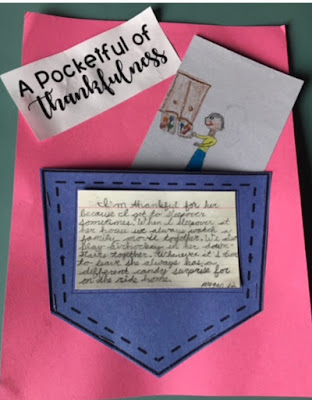 |
| Stretching narratives out with a story mountain |
This year was the first year our school had been using the units of study since our current third graders were kindergarteners. I can tell you that we are seeing the difference. Our kids are coming into third grade really understanding what a small moment is. If your students are not, see
Lesson on Small Moments.
One area that our third graders really need scaffolding is in stretching out the details. Maybe that is the case for you too. If so, try story mountains. They really work.
Day #1: Mapping out the Action Steps
We use an 18X12 piece of paper to make a mountain. I have students identify the most important part of their small moment first. We mark it at the top by using an action sentence. For example: "I caught a fish." "I tripped on the floor" "I sprang my ankle" "I burnt the marshmallow"
Then I have them rewind their small moments a minute or so before this important event. They write action sentence and place it at the beginning of their mountain.
They go back to the most important event and fast forward a minute or so after, and name another action.
During independent work time, I have them finish mapping out their actions.
Day #2: Mapping out the Internal Story
The next day I have students map out the internal story. I retell as story about a time when I got lost and all the thoughts that went in my head. Then I tell them that everyone has a story that goes on in their head. Today we are going to map that out. In a new color, we map out the thoughts during each action step. This time we start at the beginning and work our way through.
Day #3: Mapping out the Dialogue (Talking out loud part)
This day is similar to the previous one. By this time, kids really understand what they are doing. I do not focus on the punctation of dialogue at this point. I just really want them to get their thoughts down on paper. We choose another new and this time map the dialogue parts with it. It is also important to note to writers that they may not remember exactly what they said in this moment, but they need to make up something realistic.
 |
| My Example |
 |
| Student motivated to learn |
 |
| Student not motivated, but teachable |


























































